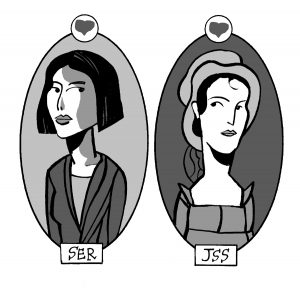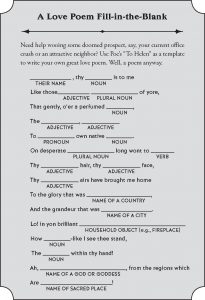One day, when Edgar Allan Poe was about fourteen, his friend Robert Stanard invited him over to his house after school, where Poe met Robert’s mother, Jane Stith Stanard, a pale-faced ministering angel, “the first purely ideal love of my soul.” It only makes sense. Poe had lost his own mother so early on that his orphan’s heart may well have longed for a mother’s gentle expression, sympathetic ear, and—what else?—air of inexorable tragedy.
Jane was about thirty. He was still a boy. Nothing romantic could happen, but he could still bathe in her presence, maybe touch her hand. At least, he could until the spring of 1824, when she died, insane. Poe was fifteen years old.
In later life, Poe would tell the story so many ways that it’s impossible to know how many times he met Mrs. Stanard. He told one girlfriend that they met just once. Poe’s aunt-and-then-mother-in-law, Maria Clemm, heard a different version. “When Eddie was unhappy at home (which was often the case), he went to her for sympathy,” Mrs. Clemm said, “and she always consoled and comforted him.” After Jane Stanard’s death, Clemm maintained, Poe and Robert would visit her grave, mourning together through the long, drawn-out evenings.
Poe’s second brush with love involved someone more appropriate—in fact, a neighbor close to his own age. Sarah Elmira Royster lived across the street from the Allans for a time. Years later, she is said to have told a Richmond acquaintance: “He was a beautiful boy—Not very talkative. When he did talk though he was pleasant but his general manner was sad.” Poe visited her at her house, and sometime before he left for college at the University of Virginia, the two reached an understanding. He wrote her often from Charlottesville, but she never wrote back. Not because she was ignoring him. Because she didn’t know he was writing her at all. Elmira’s father was intercepting the letters—who can blame him?—maybe because he thought they were too young to get seriously involved, or more likely because Poe was an adopted son, not an official heir. Elmira, assuming Poe no longer cared for her, turned seventeen and married some rich guy with society connections (and who could blame her?).

Then, guess what? Poe showed up at the wedding like an importunate, freshly dumped ghost—or so he implied in a poem—and saw a “burning blush” come over Elmira’s face when she caught sight of him. It’s unlikely Poe was telling the truth, but, as is often the case with him, his “rendition” of the story proves just as revealing. As fans know, he was never the type to overlook a personal mythmaking opportunity, or leave undeveloped some supposed encounter with gut-wrenching tragedy. This seems to reflect a philosophie de l’amour he was developing, as self-consciously as possible, of course. In one of the poems he claims to have begun writing as a teenager, he said:
And so, being young and dipt in folly
I fell in love with melancholy…
I could not love except where Death
Was mingling his with Beauty’s breath —
Or Hymen, Time, and Destiny
Were stalking between her and me.
To hear him tell it, Poe could only fall in love when a tragic end was a foregone conclusion, or when struggling to overcome such Matterhorn- high hurdles as time, destiny, and meddling parents. Someone dies insane, somebody gets jilted, or GTFO. Love affairs that go nowhere are just… basic. The truly evolved person scopes out only those relationships that must necessarily end in grief. Otherwise, where’s the spark? Also, this way you don’t have to splash out so much on Valentine’s Day tchotchkes and tequila sodas.
Whether Poe was being sincere or melodramatic, this line of thinking was characteristic of his era. You could say the big artistic and intellectual mood of the first half of the nineteenth century was all about experience and imagination. Feelings triumphed over reason, dogma, tradition, religion—basically, over whatever your stodgy dad believed. Both Poe and his own youthful antihero George Gordon, Lord Byron (the wildly promiscuous, bisexual, own-half-sister-banging poet) lived out their Romantic values, and then some.
When they weren’t swooning, they were grieving. When they weren’t grieving, they were swooning (to get over the grief). They understood themselves to contain both man’s greatness and his wretchedness, and they were obsessed with obsession, love, youth, nature, fate, loss, despair, death, and such weird, floating states as might lie beyond death. But what else could they do, given the combination of rampant infectious disease and lack of medical understanding in those days, the absurdly s**tty romantic, sexual, and existential odds they had no choice but to brave out?
Their kind of Romantic heroism, as historian Jacques Barzun argued, wasn’t just a melodramatic display. Instead it was a courageous, life- affirming response to the awful problems of their age, arguably of every age—no matter how tawdry and sordid it may have appeared at times. “The fact that romantic lives also show a seamy side or a want of calmness is therefore no diminuation of the heroism,” Barzun said, “on the contrary it is the drabness and the anguish that make life heroic.”
What’s this got to do with you? Everything. Thankfully, people don’t die young in the same numbers nowadays, yet your likely trajectory of years of wistfully swiping right, possibly leading up to a historically late marriage or no marriage at all, means you’re no more insulated from crushed hopes or romantic failures or lost loves than Poe or Byron ever was. Here, masticate on some facts.
- While the research is spotty, limited surveys suggest the average age of first love is between fifteen and eighteen.
- According to CDC data, as of 2015, the average man aged twenty-five to forty-four has had 6.1 sexual partners (of the opposite sex, anyway). A woman of the same age has had 4.2.
- The same data show that 21 percent of men aged fifteen to forty-four, and 10 percent of women of the same age, have had more than fifteen partners.
- The average age of first marriage in the United States is twenty-seven for a woman and twenty-nine for a man.
- The American Psychological Association reports that 40 to 50 percent of first marriages end in divorce, with the divorce rate significantly higher in subsequent marriages.
Eyeball the landscape, and you’ll see: pain is inevitable. Why not take the Romantics’ view, Poe’s view, and prepare to glory in your despair? Stockpile the tissues—and the Stoli, and the Cherry Garcia. Line up the rebounds.
Your first love is the natural place to start. When it comes to this pivotal initial relationship, the best strategy is to lead with bitter experience—to lose your first love in the most spectacular possible fashion. The worse the loss, the less likely you are to ever get over it, and at one go you will have calibrated your romantic expectations for the rest of your life right down to zero where they belong. Voilà!
Staying with your first love may in fact be the riskier proposition. Is it even possible to be happy forever in that way you envisioned in your “purely ideal” teenage years? Nope. If you stayed together, you’d soon be doing laundry together, raising children together, paying quarterly estimated taxes together. Grim practicalities would soon set in, over a period of years slowly strangling your original hopes. You’d get tired of the person—you’d find out they weren’t so wonderful and perfect after all.
But if you lose them early on, then you’ll become convinced they were special and irreplaceable, and you’ll long to be with them, and you won’t be able to be with them, and not only will you have given yourself ample material for terrible, angsty poetry, you’ll have tapped into a grand cultural tradition, a rite of passage every bit as important as a first kiss or losing your virginity. What is this magical rite? Looking them up online years later, and marveling at how he’s already lost his hair or how much weight she’s gained, then breathing a sigh of relief at the bullet you dodged.
You don’t have to experience early romantic losses on Poe’s scale, either, to get the salutary effect. Your first love need not have died insane in 1824, or have married someone else at seventeen, though it helps. Do not worry. You can be disappointed by much less shocking developments. Any adolescence can provide the right raw ingredients, because youths and young adults need only scant encouragement to experience new phenomena in a powerful way. “All wonder is the effect of novelty upon ignorance,” as Dr. Johnson once said. That is, the lack of precedent will create the drama. So long as your experiences leave you feeling doomed, depressed, bereft, haunted, and hopeless, then you’re on your way.
Even if you don’t write poetry and don’t want to, you’ll still have material enough for every secret smile that you ever smile at weddings, or at young couples making out on the subway, or when gazing over at some married couple eating dinner together in hostile silence. You will know. You may never grow wiser about love. Poe didn’t, as the rest of his love life demonstrates. But, crucially, it is possible at least to feel resigned to your fate.
In an 1839 letter, Poe told a friend, “It makes me laugh to hear you speaking about ‘romantic young persons’ as of a race with whom, for the future, you have nothing to do. You need not attempt to shake off or to banter off Romance. It is an evil you will never get rid of to the end of your days. It is a part of yourself—a portion of your soul. Age will only mellow it a little, and give it a holier tone.”
This is what you must tell yourself every time you feel your hopes stirring. Amorous longing is an evil you’ll never get rid of. It’s a part of yourself, a portion of your soul. Age will mellow it only a little and give it a holier tone. Or, in modern terms: No crush is too pathetic, no romantic prospect too weird, inappropriate, or obviously doomed, to get your hopes up just one more time. Lean on in, and don’t expect it to end well.

Excerpted from Poe for Your Problems: Uncommon Advice from History’s Least Likely Self-Help Guru by Catherine Baab-Muguira. Copyright © 2021. Available from Running Press, an imprint of Hachette Book Group, Inc.
